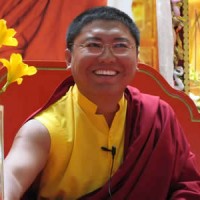Most people suffer from being afraid of themselves, afraid of not being able to liberate the thought or emotion that is about to arise. At the moment the thought arises, they single it out as no good. You often hear that negative emotions are bad, but you don’t know how to let them go. All these negative traits have been in you. But you can’t not be how you are, so what do you do? For the unrealized person, there is only one solution: be depressed about it. All spiritual systems say negative thoughts are bad. You cannot find any that say negative thoughts are good. Really, are there any? Maybe some of them say that you should express them, let them out, but that is still because they know that negative thoughts are not good, that if you did not let them out you would just keep them festering inside. It is merely a different way of phrasing the same depressing information.
The main point is to be free of negative thought and emotion. The method of getting rid of these differ, of course. There are oceans of books written about how to do so, from both spiritual and psychological points of view. We all understand that attachment, aggression, closed-mindedness, and all the other selfish emotions make problems for people. There is a broad agreement that negative emotional states are difficult, painful, and bad because they cause problems for ourselves and for others. Everybody is in agreement about that. But how to be free, for real? That is not a settled matter. There is a lack of clarity about how to be truly free. No matter how much it is explained or discussed or thought about, the problem remains largely unsolved. Honestly, there is only one solution: set your buttocks down on the meditation cushion and train in how to be free. As far as I am concerned, that is the only way.

Tsoknyi Rinpoche
from the book Fearless Simplicity: The Dzogchen Way of Living Freely in a Complex World
Read a random quote or see all quotes by Tsoknyi Rinpoche.
Further quotes from the book Fearless Simplicity:
- Acknowledging illusion
- True compassion and devotion
- Simply an illusion
- Importance of a calm mind
- Just let it go and relax
- Finally very free and easy
- True freedom
- Expanding compassion
- Fearless simplicity